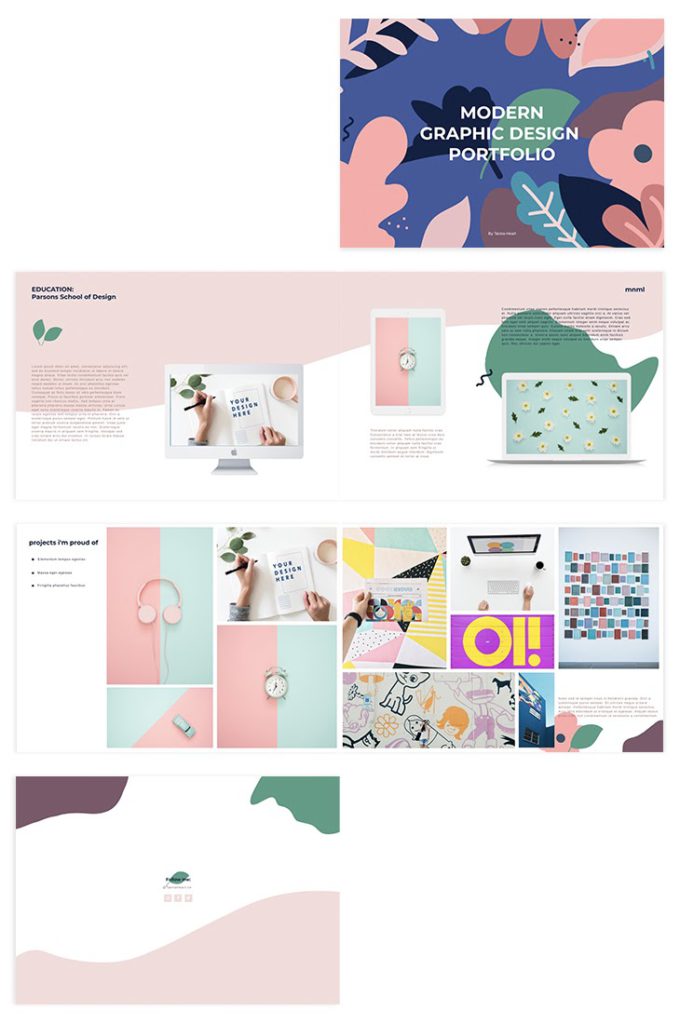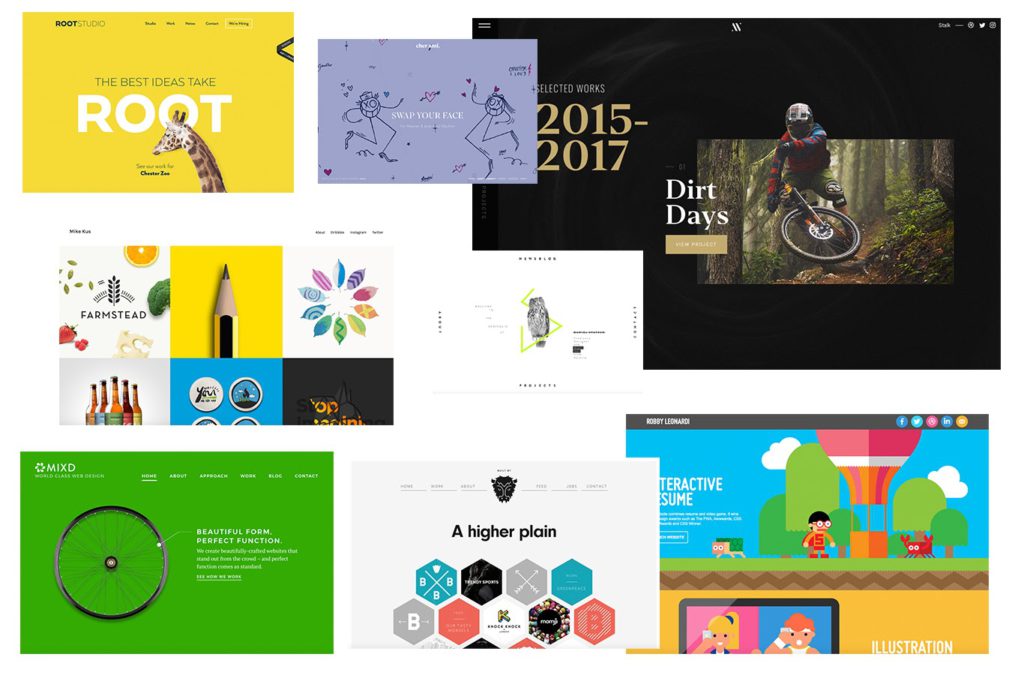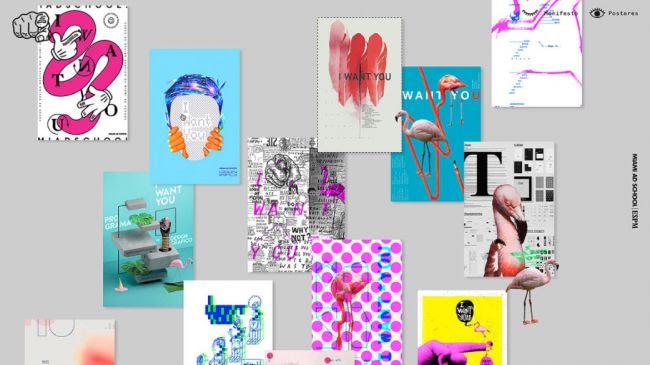A Beginner’s Guide to Creating a Graphic Design Portfolio [+Examples]
![A Beginner’s Guide to Creating a Graphic Design Portfolio [+Examples]](/_next/image/?url=https%3A%2F%2Fwordpress.peppercontent.io%2Fwp-content%2Fuploads%2F2022%2F01%2FHow-to-build-your-graphic-design-portfolio.png&w=1536&q=75)
Table of Contents
- Why Do You Need a Graphic Design Portfolio?
- How to Build a Graphic Design Portfolio
- Top Graphic Design Portfolio Examples
- Things to Avoid When Building a Graphic Design Portfolio
- Key Takeaways
- Conclusion
- FAQs
With more and more graphic designing projects emerging, the necessity to build the best graphic design portfolio is now being felt. But there are some general issues that many of you face when trying to make your portfolio stand out in the crowd. As it is the most effective and suitable way of showcasing your work to prospective clients, it is important to know all things you need to consider when making one.
We know, by now, you’re tired of searching for the best graphic design portfolio examples on the internet. Well, you’ve finally come to the right place. Keep reading to learn everything about how to create a graphic design portfolio.
Why Do You Need a Graphic Design Portfolio?
If you’re a freelance designer, you need to have a portfolio. Period. Trying to get work without one is like a carpenter showing up to your house with no tools. Sure, you could hire them, but why would you bother? It’s the same with graphic designers. Potential clients want to see some examples of what they’ll get if they hire you, and only a portfolio can provide that.
But even if you’re not looking for freelance work, having a portfolio is essential for getting the kind of job that will pay your bills. You need to show potential employers that you know what you’re doing, and it’s hard to do that without samples of your best work. Hence, if you want to start big as a freelance graphic designer, you must have a solid graphic design portfolio.
How to Build a Graphic Design Portfolio
When you are starting out as a graphic designer, it is important to have a good portfolio. A strong portfolio is your biggest marketing tool. It shows potential clients what type of work you can do and how you can do it. A good graphic design portfolio can help you get noticed by potential employers, collaborators, and clients. Here are five helpful tips for creating the best graphic design portfolio.
1. Pick the right theme
A lot of people get caught up with their design portfolios at the beginning. They feel like they need to make something really fancy to impress their potential clients. In fact, you can go simpler than expected. If you are just starting out, pick a simple portfolio site like Squarespace and just focus on creating good content. Once you start getting more client inquiries, you can upgrade your website with more advanced features that are designed for professional designers and agencies.
2. Be innovative
Innovation is important in the field of graphic design. You should always be on the lookout for new and improved ways to present your work. This can be accomplished by integrating videos and interactive elements into your website. This will give your portfolio a fresh look that is sure to catch people’s attention. It will also make your site stand out from competitors who may not be using these elements in their portfolios.
3. Use white space
White space helps create an elegant and modern look that will make your portfolio look cleaner. White space allows viewers to focus on the images without being distracted by other elements on the page. It also helps draw attention to the key features of each image, such as the font style or color scheme used in a logo design you created for your client (as an example).
4. Keep your audience in mind
Graphic design portfolios can be made in different ways. You can use images, animation, video, and even interactive elements. The goal of this type of presentation is to show your potential clients what you can do for them. This is why it should be exclusive to what you want to do. It also has to be relevant to the audience that you are targeting. If the people that you are targeting are more interested in multimedia-rich graphic design, your portfolio should include similar work samples. The same thing goes for any other graphic design element, including websites and logos.
5. Choose quality over quantity
While it may seem like the best idea to create as many pieces of content for your portfolio as possible, it’s not always the case. It’s much more important to make sure that everything you include is of high quality, instead of stuffing numerous sub-par pieces of work in your portfolio. It’s much better if someone sees five pieces from you and thinks, “This person’s work is great,” instead of seeing 20 and thinking, “This person has no idea what they’re doing.”
6. Choose the right colors
While designing your portfolio, create a theme that will be consistent throughout the entire project. This will not only make it visually appealing, but it will also make it easier to navigate the portfolio.
Colors make a strong impression on people. Choose colors wisely, as they will have an impact on how people perceive your work. Try to use bright colors for projects that require more attention, and use pastels for projects that are predominantly text-heavy, such as brochures, reports, or proposals.
Top Graphic Design Portfolio Examples
Beginner or expert, we all need some inspiration from time to time. For this reason, we have put together a small list of graphic design portfolio examples to help you get started.




Things to Avoid When Building a Graphic Design Portfolio
A graphic design portfolio is like a resume. It’s a showcase of your work and experience, which you can use to prove your skills to potential employers. Treat it with the same care with which you would treat a resume. Make it as polished and high-quality as possible, and don’t be afraid to ask for help from friends who are designers, if something looks off.
Here’s a list of things you should avoid when building your graphic design portfolio.
1. Unprofessional design
Make sure that every piece of your portfolio looks professional. Don’t let unprofessional colors, fonts, or other elements get in the way of your work being seen as high-quality.
2. Too much text
If you have to include too much text in your project, it’s probably a sign that you’re not focused enough on the design. While text is important, you cannot let it overpower your design. Try to focus more on visuals.
3. No contact information
Don’t forget to include your name and contact information on the beginning or ending page of your portfolio. This is especially important if you’re applying for jobs and need people to be able to get in touch with you easily.
4. Too many projects
You don’t need to include every single project that you’ve ever worked on in your portfolio —shortlist just the best ones or ones you’re most proud of.
5. Free fonts
Using free fonts can be tempting, because of their low cost and ability to convey a certain message or feeling. But free fonts may not always align with your professional design. Moreover, many of them are low-quality and have missing characters. If you use free fonts for professional use, you can even be sued.
6. Recreating someone else’s work
Avoid recreating existing works by famous designers. This is the worst thing you could do to your portfolio, because it tells employers nothing about your creative ability. You can also be sued for plagiarism.
7. Being a Jack of all trades
It’s tempting to try designing every part of a project in order to get more experience. But this will only lead to messy results, as each portion might be done poorly or in haste. Instead, take on only one aspect of a project at a time. This will help you build your expertise in doing one thing, instead of trying to do many things at once.

Key Takeaways
- Building a graphic design portfolio is no simple task. It takes time, research, and thought to develop an outstanding design portfolio.
- However, it’s not impossible. All you need are the right tools and some helpful advice. The right tips can help you get started on your path towards becoming a professional designer.
- Don’t be afraid to show off your work. Whether you’re looking for a graphic design job or trying to build your portfolio, make sure you include examples of your best work.
- Make sure you have a clear understanding of your client’s needs and requirements before you start working on a project. Plan out all the necessary graphics, text, and pages before starting the design process.
- Showcase your talents. Make sure you add all the necessary contact information about yourself on the beginning or ending page of your portfolio.
- Keep your work relevant, organized, and consistent. This will help your potential employer to easily find out what you have done, and make the hiring process smooth.
- If you feel your design portfolio is not good enough, don’t hesitate to change it as per the latest market trends, as this will help you in getting more job opportunities in the future. It will also help you learn more about your industry.
- Always try to be updated on the latest developments and technologies in the graphic design field to ensure you are able to meet the requirements of various clients easily, and win their trust over.
- Be consistent with your brand identity when designing an experience map or user flow chart. People need to see a clear picture of who you are and what you stand for as a graphic designer.
- Make sure your portfolio is easy to navigate. When people visit your portfolio, they should be able to find what they are looking for quickly and easily.
Conclusion
A graphic design portfolio is a staple of the graphic design world, and for good reason. It is your resume and also your calling card. It’s a concise collection of your best work with a bit of background information, explaining how and why you created it. It’s a living document that showcases your skills and experience to potential employers and clients, whether you are looking for freelance jobs or full-time employment.
There are numerous ways to showcase your work in a portfolio, from simple solutions like creating a website or blog to more complex options like custom-designed booklets or magazines. But no matter what format you choose, it’s important to understand the purpose of the portfolio, so that you can create one that will help you meet your professional goals. We hope the tips listed above will help you build the best graphic design portfolio and kick-start your design journey.

FAQs
A graphic design portfolio is a collection of your best work for potential clients to see. It should highlight your abilities, creative skills, and design style through your past work. A designer’s portfolio might include logos they’ve created, advertisements they’ve designed, or photos they’ve edited. It might also include mockups of websites they’ve designed or business cards they’ve created.
In your graphic design portfolio, start by including projects that represent your best work. It’s important to emphasize the projects you have created, instead of just listing the software programs you know how to use or the equipment that you have access to. Furthermore, you can also use pre-made templates to create a graphic design portfolio.
It might be a bit difficult to get paid well at the beginning of your career. However, with experience and the ever-increasing demand for graphic designers, you can rest assured about the pay.
A bachelor’s degree in any fine arts course is generally required to become a graphic designer. That said, you can also learn graphic designing on your own, using web resources
Yes, you can learn graphic designing on your own, utilizing the right tools and resources available on the internet. You can also enroll in online courses to learn graphic designing at your own pace.
Latest Blogs
Learn how to rank on AI search engines like ChatGPT, Perplexity, and Gemini by optimizing your content for authority, structure, and relevance. Stay ahead in AI-driven search with this strategic guide.
Explore the best healthcare SEO services for your medical practice. Improve online visibility and effectively reach more patients in need of your services.
Discover top social media agencies specializing in banking solutions, enhancing financial services and driving engagement.
Get your hands on the latest news!
Similar Posts

Design
7 mins read
15 Best Firms Offering Design Services in India

Design
5 mins read
All You Need to Know About Data-Driven Design

Design
6 mins read